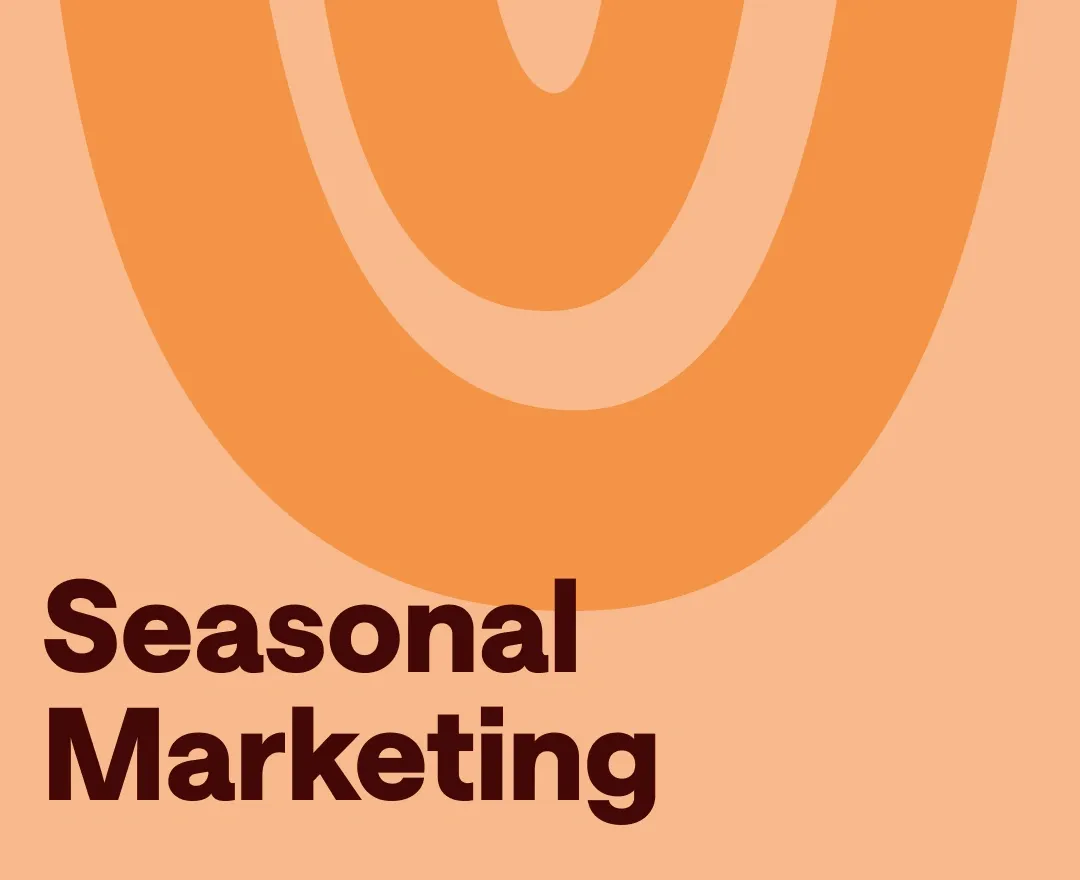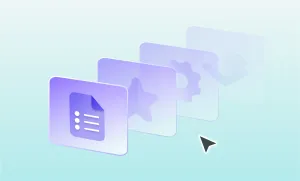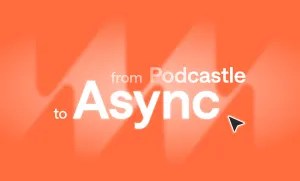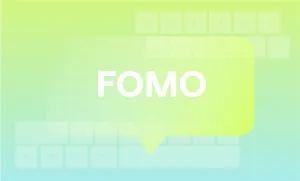Seasonal marketing isn’t some corporate-only, Pumpkin Spice™ cash grab. It’s one of the sharpest tools creators can use to inject relevance, boost reach, and get results without reinventing the wheel every quarter.
Taking advantage of seasonal events is a plus regardless of whether you’re a solo YouTuber, a part-time podcaster, or an educator building a digital empire from your bedroom.
Too many creators miss this. They post evergreen content year-round and wonder why views flatline in Q4 or engagement tanks in the summer. But look at creators who thrive? They’ve built systems around timely themes like Valentine’s Day self-love guides, September back-to-school planning series, or Halloween-themed tutorial drops.
Here's everything you should know about seasonal marketing and how you can use seasonal trends to your advantage.
Listen to this article
What is Seasonal Marketing (and Why It Works So Well)
Seasonal marketing is the strategic use of calendar-based events, holidays, trends, and cultural moments to increase content engagement and conversions. Instead of guessing what your audience might care about, you piggyback on what they already care about, because the calendar drives behavior.
Let’s break it down:
- Behavioral shifts: In January, people want to reset. In May, they’re dreaming of summer escapes. In September, it’s all about productivity and fresh starts. Your content should echo this.
- Search intent explodes: Google Trends shows massive spikes during seasonal windows. "Mother's Day gift ideas" begin peaking in late April. ["Christmas recipes"] surges in early December. You can literally watch demand swell.
- Emotional context: People are more reflective in December, romantic in February, and adventurous in July. The content that wins is emotionally aware.
According to Shopify’s seasonal data, creators who time product drops or campaigns around seasonal themes see up to 4x more conversions. Meanwhile, it’s estimated that U.S. consumers spent $15 billion on Valentine’s Day alone in 2025. Yes, even a single-day niche like that is a multibillion-dollar moment.
Spotting Seasonal Moments (Beyond the Obvious Ones)
Sure, Halloween, Christmas, and New Year’s are marketing slam dunks. But the real opportunity lies in stacking your own calendar with relevant moments that speak directly to your niche.
Think of it as content GPS:
- Niche holidays: If you’re a podcaster or in the process of releasing a podcast, mark International Podcast Day (September 30). For small biz owners? National Small Business Week in May is ripe for storytelling.
- Cultural waves: Piggyback on events like the Super Bowl, Met Gala, or Eurovision. Even creators outside of sports or fashion can join the conversation with smart commentary.
- Seasonal life cycles: Back-to-school, graduation season, summer break, wedding season, Q4 budgeting—these aren’t just dates. They’re content themes.
- Binge-worthy pop culture: When Barbie mania hit in 2023, brands and creators from every niche jumped in with themed content.
Looking for a pro workflow? Build a rolling 12-month calendar in Notion or Google Sheets. Layer in:
- Monthly awareness days (use Forekast or NationalToday)
- SEO spikes using Google Trends
- Recurring internal moments (e.g. product launches or live streams)
This lets you proactively build content toward traffic peaks, not scramble in real-time.
Applying Seasonal Marketing to Your Content
Seasonal marketing isn’t about wrapping every post in tinsel. It’s about framing your existing value through a seasonal lens.
Here’s how to go deeper by content format:
Social Media Posts
Stop treating IG and TikTok like last-minute parking lots. Your social strategy is where seasonal ideas can go from static to viral.
- Drop a spring-themed meme series about "cleaning up your workflow."
- Share summer nostalgia reels with captions like "POV: You’re editing content from your childhood bedroom again."
- Build countdown posts before launches tied to holiday urgency.
Hook Tip: Combine trending seasonal audio with emotion-based captions. Use hashtags like #fallreset, #giftguide2025, or #newyearnewme to catch algorithm waves.
Use Recurring Webinars to Power Your Event Marketing Strategy
Recurring webinars are a smart way to build ongoing engagement and make event marketing more impactful. Instead of relying on one-off launches, recurring sessions - like a monthly product demo or a quarterly industry Q&A - create consistent touchpoints with your audience. They help establish authority, build trust over time, and provide regular opportunities to showcase new ideas or offers. With a repeatable format, you can streamline production while generating a steady stream of content for all your channels.
Podcast Episodes
Themed, storytelling-based podcast arcs are underrated. Seasonal topics provide natural tension and story structure.
- In Q1, release a "Reset & Refocus" series that ties productivity with the New Year vibe.
- During Valentine’s week, invite guests to talk about relationships in their creative careers.
- For spooky season? Drop episodes on fear, risk-taking, and failure in entrepreneurship.
Pro tip: Bake in seasonal lead magnets (e.g. checklists, calendars) as episode bonuses to build your email list.
Newsletters
If you don’t treat your newsletter like an avenue for seasonal personalization, you’re missing out. People read newsletters more closely during the holidays because they’re looking for personal, curated content.
- Create a "Spring Clean Your Workflow" edition with tools and templates.
- Curate a "Fall Essentials for Creators" drop with must-haves.
- Write emotionally-driven letters around themes like burnout in summer or reflection in winter.
Pro tip: Don’t waste too much time on each creative aspect of setting the newsletter up. If you’re out of ideas, try using AI for lead generation, whether it’s thinking of a CTA to close things off or adding special holiday visuals to spice up each week’s newsletter.
Subject line formulas:
– "You Need This Before [Season] Ends"
– "Our Favorite [Holiday] Hacks (and One We Regret)"
Short-Form Videos
Trends move fast. Seasonal themes keep you relevant without constantly reinventing.
- Create TikToks or Reels comparing "past you vs. now" around New Year themes.
- Drop mini-lessons tied to academic season (back-to-school, finals prep).
- Use seasonal props (pumpkins, sparklers, Santa hats) without being cheesy to visually cue the time of year.
Pro tip: Think about changing video thumbnails and captions to match real-time seasonal terms people are searching. YouTube Shorts and TikTok both favor contextual cues.
Digital Products and Merch
Seasonal launches give your products urgency. That's because you’re giving people a reason to act now.
- Sell limited-edition eBooks tied to annual goals (e.g., "Your 2025 Creator Blueprint").
- Drop Valentine-themed templates or holiday-themed coaching bundles.
- Offer merch collabs (like "summer mode" shirts or mugs) only available for a few weeks.
Scarcity triggers action. Tie merch to countdowns. Use timers. Build waitlists before launch. Treat your seasonal drop like an event.
Seasonal Marketing Tips for Every Type of Content Creator
If you’re serious about making seasonal marketing work, you can’t just slap a holiday filter over your usual content and expect magic. You need to reframe your offer, your voice, and your message around what your audience is going through emotionally and practically during that time of year.
Here’s what that looks like when applied across different creator categories:
YouTubers
YouTubers thrive on consistency and connection, but seasonal marketing helps them unlock spikes of momentum and get copious amounts of citations if the video takes off. A successful seasonal YouTuber isn't just someone who posts a “gift guide” in December. They use the platform’s algorithmic behavior to drop themed content when search interest and user intent are highest.
For example, instead of doing a generic vlog in January, you can make it hyper-relevant by discussing lessons learned from last year’s failures and how you’re recalibrating for the new year. This kind of reflective content performs well because people are in a self-improvement mindset.
In the fall, the YouTube algorithm favors DIY, costumes, and transformation videos, so if your brand allows it, you can reinterpret Halloween with a twist, like “dressing as famous CEOs” or doing industry parody content that ties into October themes. For December, switch into wrap-up mode: top tools, favorite moments, or even a “react to my first video of the year” concept. Viewers love closure and reflection. You also need to optimize titles, thumbnails, and keywords to match seasonal SEO shifts (e.g. “Best X for 2025”).
Podcasters
For podcasters, seasonal content allows for deeper emotional storytelling and guest selection. Episodes timed with themes like love, gratitude, burnout, and goal-setting have built-in resonance during their respective calendar slots. In February, for example, you could bring on guests to talk about the emotional side of working with partners or collaborators, which ties directly into Valentine's Day without being cheesy.
During May, tie into Mental Health Awareness Month by curating a limited series focused on burnout, boundaries, and creative wellbeing. This creates space for vulnerability and makes your content feel more urgent and relevant. Come November, gratitude-themed episodes (including listener thank-yous or behind-the-scenes stories) perform better because audiences are already in a reflective, giving mindset. Also consider reusing seasonal topics yearly, since listeners expect traditions, and it’s a great way to build loyalty.
Small Business Creators
For small business owners and solopreneurs, seasonal marketing should be baked into product development, offer positioning, and social proof. March is a huge opportunity to celebrate Women’s History Month. Not just through discounts, but by spotlighting stories, customer testimonials, and origin stories that reflect the values of your business.
Don’t just say “we’re giving 20% off”. Say why you’re doing it, and attach it to a narrative. In July, people hit a mental slump, so it’s the perfect time to launch a mid-year reset offer, challenge, or product pivot that helps your audience recover motivation. You can repurpose content from your Q1 launch and reframe it through a summer lens (e.g., “realign before fall rush hits”).
As Q4 approaches, build content that helps buyers gift your product. Show use cases, create urgency with countdowns, and offer “holiday packaging” even if your product is digital. And use your channels (email, Instagram, Etsy, TikTok) to mirror what larger brands are doing, but with more authenticity.
Educators
Whether you teach via YouTube, Notion, Zoom, or PDFs, seasonal timing is critical for educators. You want to release content that supports your audience when they’re under the most pressure, and when they’re most likely to invest in tools and resources. In August, learners and parents alike are in “reset” mode.
Drop a short content series or downloadable planner focused on back-to-school prep. In December, stress is high, and audiences crave structure, so offer study resources, live Q&As, or curated printables that help people feel in control.
April is another smart window, as it signals spring exams, academic fatigue, and planning season for summer learning. Tailor your value here by offering energy-restoring routines, mini-sprints, or light accountability programs. All your content should answer one seasonal question: “What is my learner stressed about right now, and how can I lighten that burden?”
Marketers and Strategists
If you’re in marketing, you need to be one season ahead, not reacting in real time. In September, every smart strategist is building content and lead magnets that speak to Q4 prep, budget planning, and campaign architecture.
Teach people how to reverse-engineer their Black Friday strategy with a month-by-month plan starting in early fall. When November rolls around, marketers should publish behind-the-scenes looks at live campaigns, teardown videos, or commentary on what other brands are doing right or hilariously wrong. This is great fodder for engagement.
Come June, the slow season hits. Turn your attention to helping freelancers, agencies, and consultants build recession-proof systems, sharpen their backend workflows, and repurpose high-performing campaigns for lower-effort ROI. Your seasonal content should make you indispensable during budget season and invaluable during the “quiet” months.
Tools, Automations and Tactical Tips
You don’t need a full-time team to make this work. Build once. Reuse often.
- Notion + Cron calendar: Map your whole year, broken by format + campaign.
- Google Trends & Exploding Topics: Set alerts on your niche terms. explodingtopics.com
- Canva Pro: Preload seasonal templates in advance (gift guides, quote graphics, checklists)
- CapCut: Schedule seasonal templates and save transitions in folders
- ChatGPT: Prompt seasonal outlines, episode titles, or themed tweet drafts
- Later, Metricool, or Buffer: Schedule seasonal rollouts weeks ahead
Create seasonal "buckets" per quarter and rotate:
– Q1: Reset, goals, health, budget
– Q2: Growth, refresh, spring vibes
– Q3: Travel, burnout, learning
– Q4: Celebration, nostalgia, sales
Create Seasonal Content with Podcastle
When you sync your content with the natural rhythm of your audience’s life, you stop fighting for attention. You earn it.
This isn’t about fluff or riding every trend. It’s about building a system that lets you show up with content that feels personal, timely, and relevant, even when it's pre-scheduled two months in advance.
Use the seasons as your engine, not your excuse. Look ahead, plan tight, and let relevance do the heavy lifting. Your content deserves more than random posting. It deserves timing.
About the Author: Ryan Harris

|
Ryan Harris is a writer focused on eLearning and the digital transitions going on in the education realm. Before turning to writing full time, Ryan worked for five years as a teacher in Tulsa and then spent six years overseeing product development at many successful Edtech companies, including 2U, EPAM, and NovoEd. |








